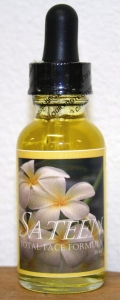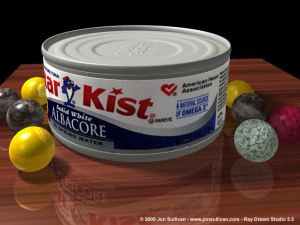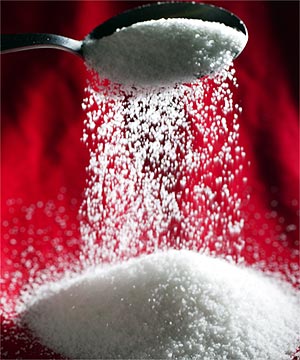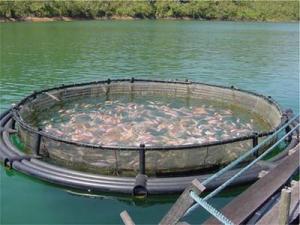Posts filed under ‘Proof in the Pudding’
Swine Flu vaccine….safe? USA – Vaccine obsessed?

I know… all the pro-vacciner’s are probably already pissed from the title.
I’m not here to say whether they are good or bad.
Although personally I feel there are entirely too many given to our children. ESPECIALLY when they are given 3 and 4 shots at once!
I feel this way through personal experience when my daughter received 4 at once and within a week developed a 105 degree fever. After a work up in the emergency room I was told “there is nothing wrong with her.”
After this she developed Juvenile Rheumatoid Arthritis. Huh, coincidence. I think not. Even medical doctors today who are for vaccine’s have no qualms about her NOT getting anymore – which says something in this day and age.
A friend of mine recently took her son to the doctor and they wanted to give him 3 shots at once. When she heeded my advice to
- have one at a time
- months apart
- and when he was healthy.
Well her previously well-mannered doctor had a fit. (talking down to her with irritation and annoyance)
So WHY is it that doctors are so angered by parents wanting to be “safe” in this day and age of extraordinary amount of diagnosis – autism, ADHD, bipolar, and many more?
I mean – these were so rare when i was a kid. And yes they were rare, even if a few were undiagnosed.
No i don’t believe that vaccines are evil. I believe too many, to soon, together, along with dangerous preservatives is wrong.
But put together the so called food most people eat these days – artificial this and that – nothing alive like fresh fruits and veggies. (Even those are so much less healthy because of overworked soil and pesticides) Along with the amount of vaccines we receive and pollution.
Mix it all together and what do we get – tons of childhood illness that were almost unheard of 30 years ago.
So – it now seems that the powers that be who push this ridiculous amount of vaccines are even scaring some of the medical community. Take a look at this –
Contains Thimerosal? That lovely mercury preservative so disputed these days….if you still haven’t gotten clear on what it is and why it is so bad, here you go….
Thimerosal
The Department of Defense classifies mercury as a hazardous material that could cause death if swallowed, inhaled or absorbed through the skin. Studies indicate that mercury tends to accumulate in the brains of primates and other animals after they are injected with vaccines. Mercury poisoning has been linked to cardiovascular disease, autism, seizures, mental retardation, hyperactivity, dyslexia and many other nervous system conditions. That’s why the FDA rigorously limits exposure to mercury in foods and drugs. Some common sources of mercury include dental amalgam fillings, various vaccines and certain fish contaminated by polluted ocean waters.
Banned around the world, but not in the United States
Why is mercury toxic in all ways except through vaccines? Enough said.
But…
The other thing that confuses me is this – if our vaccines are so great and our health care powers that be are so enlightened then why –
According to the World Health Organization,
those of us in the USA have the most
expensive health care in the world with
results at 72nd.
HHHmmmmm……
Are the Chemicals in Your Facial Moisturizer Harming You?

Don’t you love that fresh clean feeling just after you wash your face?
Then you may put on a moisturizer (especially if you are maturing like myself (:)
It makes your skin feel smoother and it may even give you a glow?
We are doing this so our skin is healthy and moisturized to keep it looking young and less wrinkled.
But do you know what chemicals you may be putting in your body? Do you know they may be doing you more harm then good?
Before getting into learning about health – I never thought about it. I used whatever lotion I had, thinking I was doing my skin a favor. What I didn’t know was how awful for me the chemical filled lotions were.
Here are a few examples of common ingredients in moisturizers:
Why does the FDA allow ingredients like these in products that are applied to the largest organ we have – our skin?
Lovely! Any ingredients.
Well they wouldn’t knowingly add harmful ingredients – right?
Facial moisturizers are put on your face 1-2 times a day! I know I don’t want to take the chance….
For woman who are thinking of having children, according to this study, will most likely affect your unborn children.
Look at this study:
World Wildlife Fund (UK)
- 30 new-born babies
- Blood tests taken from the umbilical cord
- Analyzed for the presence of 35 chemicals
- Every baby tested positive for chemicals
- Chemicals found have suspected links to birth defects, genital abnormalities, and certain types of cancer
- All babies contained at least 5 of the 35 chemicals
- Some contained as many as 14 of the 35 chemicals
If you want something that moisturizes and much more and it only contains three ingredients that are so natural you eat them – give Sateen Facial Oil a try!
Sateen is a proprietary, organic, and all-natural citrus blend  of Orange and Lemon Oils in a base of Sweet Almond Oil that works as an effective all-in-one facial product.
of Orange and Lemon Oils in a base of Sweet Almond Oil that works as an effective all-in-one facial product.
You are worth it. Your face deserves it. Your skin will thank you.
To Your Health!
Is Fish or a Can of Tuna REALLY THAT Bad for You? Your Kids?

If you are a 140 lb woman eating 1 6 oz can of Albacore Tuna = you are getting 140% of the EPA limit of Mercury exposure! For a 65 lb. child eating 3 oz. = 150% of the EPA limit of ‘safe’ mercury exposure.
In other words, there is way too much mercury to consider it “SAFE” to eat in my opinion. (Which sucks because I love tuna. And so does my daughter – which was something different to give her besides the daily PB & J.)
So about 4 years ago when I got into eating ‘organic’ & ‘healthy’ foods – I quit buying tuna and most foods from the typical grocery store. I am delighted to see that a lot of stores these days at least have a small section with organic choices, although I look forward to a time when that is how most food is sold!
At first, I thought the can of Tuna on the shelf in the ‘healthy’ whole food store must be OK, Right?
It made me wonder what the difference was. So I did a little searching online.
My first great discovery – a website called GOT MERCURY? – (very cute.. ) It has a ‘Mercury Calculator‘ so you can put in your weight and the type of fish (even differentiating between albacore, yellow fin, and light tuna) to find what your mercury exposure is.

 There is even an ‘Advanced Calculator’ for people who consume more than 1 serving a week! Brace yourself – you will be shocked at how much mercury you may be consuming!
There is even an ‘Advanced Calculator’ for people who consume more than 1 serving a week! Brace yourself – you will be shocked at how much mercury you may be consuming!
Here is what I found for myself and the fish I like –
- Tilapia – 0%
- Salmon – 0%
- Scallop – 20%
- Flounder – 20%
- Crab/Shrimp – 20%
- Cod – 30%
- Light Tuna – 50%
Now the NOT so good list – (I ate occasionally and will now be avoiding!)
- Mahi Mahi – 60%
- Halibut – 90%
- Lobster – 110%
- Yellow fin Tuna – 120%
- Albacore Tuna – 130%
- Orange Roughy – 200%
I did find this interesting the sight about Tuna –
For some reason – I always thought Albacore was the good one to get – wow was I wrong!
Then I found in a Dr. Mercola article – that Mercury is NOT the only worry–
Other Contaminants include:
Think that Farm Raised means cleaner healthier fish? Think again!
Unfortunately, my fish consumption is rare because of this information which is a shame because it is so good!
I didn’t realize how unhealthy Tuna was so I wanted to share what I’d learned. We all hear that our oceans are contaminated but I was shocked at how badly.
Why this continues to happen? Another blog….
To Your Health!
Money Is Tight so What Fruits & Veggies Should I Buy Organic & Which Can I Buy Conventionally Grown?

In today’s economy you may be feeling the pinch. Even if you aren’t, you may be more aware of how much you are spending. Either that is what is happening to me, or food prices just continue to climb! Probably both.
But I am a believer in eating organically. It is a fact that organically grown food has a higher vitamin/mineral content than conventionally grown produce.
Besides that I prefer to eat my fruits & veggies without all the pesticides and insecticides that conventionally grown produce offers you. If you want to know why it is better to NOT consume these dangerous chemicals – that is a whole other blog!
So what to do when my shopping list is bigger than my budget and I’m out of coupons? Buy some stuff that isn’t organic. It doesn’t thrill me but sometimes you gotta do what you gotta do.
What then is the ‘must have’ organic produce? Which are OK to buy non-organic?
Announcing a new update to an old favorite: it’s the 5th edition of EWG’s classic Shopper’s Guide to Pesticides, now with the latest government data. This handy guide shows you the fruits and veggies with the most and least pesticides, so you know which to always buy organic and which are pretty clean even when conventionally grown.
The Full List: 47 Fruits & Veggies
| RANK | FRUIT OR VEGGIE | SCORE |
| 1 (worst) | Peach | 100 (highest pesticide load) |
| 2 | Apple | 93 |
| 3 | Sweet Bell Pepper | 83 |
| 4 | Celery | 82 |
| 5 | Nectarine | 81 |
| 6 | Strawberries | 80 |
| 7 | Cherries | 73 |
| 8 | Kale | 69 |
| 9 | Lettuce | 67 |
| 10 | Grapes – Imported | 66 |
| 11 | Carrot | 63 |
| 12 | Pear | 63 |
| 13 | Collard Greens | 60 |
| 14 | Spinach | 58 |
| 15 | Potato | 56 |
| 16 | Green Beans | 53 |
| 17 | Summer Squash | 53 |
| 18 | Pepper | 51 |
| 19 | Cucumber | 50 |
| 20 | Raspberries | 46 |
| 21 | Grapes – Domestic | 44 |
| 22 | Plum | 44 |
| 23 | Orange | 44 |
| 24 | Cauliflower | 39 |
| 25 | Tangerine | 37 |
| 26 | Mushrooms | 36 |
| 27 | Banana | 34 |
| 28 | Winter Squash | 34 |
| 29 | Cantaloupe | 33 |
| 30 | Cranberries | 33 |
| 31 | Honeydew Melon | 30 |
| 32 | Grapefruit | 29 |
| 33 | Sweet Potato | 29 |
| 34 | Tomato | 29 |
| 35 | Broccoli | 28 |
| 36 | Watermelon | 26 |
| 37 | Papaya | 20 |
| 38 | Eggplant | 20 |
| 39 | Cabbage | 17 |
| 40 | Kiwi | 13 |
| 41 | Sweet Peas – Frozen | 10 |
| 42 | Asparagus | 10 |
| 43 | Mango | 9 |
| 44 | Pineapple | 7 |
| 45 | Sweet Corn – Frozen | 2 |
| 46 | Avocado | 1 |
| 47 (best) | Onion | 1 (lowest pesticide load) |
Note: We ranked a total of 47 different fruits and vegetables but grapes are listed twice because we looked at both domestic and imported samples.
GET THE GUIDE
Find out what changed about bananas, carrots, and spinach (among others), and get a printable version of the wallet-sized guide.
Hope this helps you in making decisions when shopping!
To Your Health!

Is the High Fructose Corn Syrup Ad Right – Is it Harmless?

A few friends had mentioned seeing a commercial stating that High Fructose Corn Syrup was natural and harmless. I finally saw it myself this weekend. Wow, what I was most amazed about was the lack of information that was given. I guess when you are trying to promote a unhealthy product, less is more.
If you haven’t seen it – a man and woman are picnicking and the woman is holding a red Popsicle. She offers it to him and he declines because it has high fructose corn syrup in it. When she asks him Why that is a ‘bad’ thing, he is unable to respond. This is the crux of the commercial, he can’t verbalize WHY it has a negative effect on his health. Because of this, she tells him that it is made from corn and it is natural. Then finishing with something about it being OK in moderation.
The sad fact is unless you have a PhD in natural health and /or nutrition, it is hard to articulate what you’ve read and believe. I know… I still have trouble sometimes and it has been my main reading/hobby/interest/career for the last 5 years!
Having a massive interest in ‘natural’ food and ‘alternative’ health, spawned by my daughter’s miraculous recovery from JRA (Juvenile Rheumatoid Arthritis) using these methods, I’ve removed High Fructose Corn Syrup from my family’s diet. 
I’m not surprised that this commercial is out… I mean the organic food movement is getting larger. When I began eating all organic food years ago, there was not an organic piece of produce or anything in the ‘regular’ grocery store. Now most stores at last have some sections designated for organic products. Most of these labels state NO HIGH FRUCTOSE CORN SYRUP, which is one of the ingredients informed consumers look to avoid. The corn syrup producers must be very unhappy about this and are trying to fight their demise.
After watching the commercial I thought about what I would have said when asked WHY is HFCS bad?
Well, what I know is that High Fructose Corn Syrup is unhealthy because it is a sweetener which raises insulin levels, which has negative effects on the body. Just like it is a well known fact today that sugar does this and it is best to minimize or omit it from your diet.
So what makes HIGH FRUCTOSE CORN SYRUP so bad? You can read many different articles that give you the scientific breakdown of what HFCS is and why is is unhealthy. To read specifics, check out – What is High Fructose Corn Syrup or Six Reasons Why Corn is Making You Fat by Joseph Mercola.
But the overall picture is this. High Fructose Corn Syrup was created by Japanese Scientists in the 70’s. (which back before this obesity rates were very low, coincidence?)
HFCS is now the prevalent sweetener used in the US for many reasons, but mostly money. It is cheaper. (surprise surprise)
It isn’t natural because it is modified. High Fructose Corn Syrup is made by adding enzymes to cornstarch to change the make up.
I could go on and on, but why? You’ll forget and it really isn’t important. Why? Because it is just as bad for you as sugar and is more prevalent in the American diet than sugar. And no one is arguing that we need to cut back on sugar.
I mean every knows and doesn’t fight the fact that: 
Here is a list of ways sugar can affect your health:
- Sugar can suppress the immune system.
- Sugar can upset the body’s mineral balance.
- Sugar can contribute to hyperactivity, anxiety, depression, concentration difficulties, and crankiness in children.
- Sugar can produce a significant rise in triglycerides.
- Sugar can cause drowsiness and decreased activity in children.
- Sugar can reduce helpful high density cholesterol (HDLs).
- Sugar can promote an elevation of harmful cholesterol (LDLs).
- Sugar can cause hypoglycemia.
- Sugar contributes to a weakened defense against bacterial infection.
- Sugar can cause kidney damage.
- Sugar can increase the risk of coronary heart disease.
- Sugar may lead to chromium deficiency.
- Sugar can cause copper deficiency.
- Sugar interferes with absorption of calcium and magnesium.
- Sugar can increase fasting levels of blood glucose.
- Sugar can promote tooth decay.
- Sugar can produce an acidic stomach.
- Sugar can raise adrenaline levels in children.
- Sugar can lead to periodontal disease.
- Sugar can speed the aging process, causing wrinkles and grey hair.
- Sugar can increase total cholesterol.
- Sugar can contribute to weight gain and obesity.
- High intake of sugar increases the risk of Crohn’s disease and ulcerative colitis.
- Sugar can contribute to diabetes.
- Sugar can contribute to osteoporosis.
- Sugar can cause a decrease in insulin sensitivity.
- Sugar can cause cardiovascular disease.
- Sugar can increase systolic blood pressure.
- Sugar causes food allergies.
- Sugar can cause free radical formation in the bloodstream.
- Sugar can cause toxemia during pregnancy.
- Sugar can contribute to eczema in children.
- Sugar can overstress the pancreas, causing damage.
- Sugar can cause liver cells to divide, increasing the size of the liver.
- Sugar can increase the amount of fat in the liver.
- Sugar can cause depression.
- Sugar can cause hormonal imbalance.
- Sugar can cause hypertension.
- Sugar can cause headaches, including migraines.
- Sugar can cause an increase in delta, alpha and theta brain waves, which can alter the mind’s ability to think clearly.
- Sugar can increase blood platelet adhesiveness which increases risk of blood clots and strokes.
- Sugar can increase insulin responses in those consuming high-sugar diets compared to low sugar diets.
- Sugar increases bacterial fermentation in the colon.
So it seems kind of silly that this is the Pro’s list for High Fructose Corn Syrup –
The Pro-High Fructose Corn Syrup people, namely those involved in its sale, and hhmm money, say that –
- The American Medical Association (AMA) recently concluded that “high fructose corn syrup does not appear to contribute to obesity more than other caloric sweeteners.” (Well, great they all contribute so it is not worse than sugar, that is saying something)
- Research confirms that high fructose corn syrup is safe and nutritionally the same as table sugar. (Wow, it is as nutritional as sugar, great! We just read all of the great benefits of eating sugar)
- High fructose corn syrup offers numerous benefits. It keeps food fresh, enhances fruit and spice flavors, retains moisture in bran cereals, helps keep breakfast and energy bars moist, maintains consistent flavors in beverages and keeps ingredients evenly dispersed in condiments (these are all so important to the consumer, lets have moist stuff that lasts a long time so we can be fat and sick)
Pretty silly argument huh?
My last point – if you are serious about omitting the High Fructose Corn Syrup – become a label reader. Yes, it is a pain in the ass – but your body will thank you by feeling better. You will be amazed that all it is in. Some examples –
bread, cereal, candy, beverages, condiments, jelly, salad dressing, sauces, snacks, soups.
Hope this helped clear some of it up for you!
To Your Health,
What Ingredients Are In Your Flu Shot? You’ll be SHOCKED!
I know I was.
I mean we hear it on the radio, we see it on TV, our doctors tell us we should get it to avoid the complications of the flu, RIGHT?
Did you ever wonder what is in a Flu Shot? What are your trusted doctors shooting you and your children up with?
Watch this hilarious video for an eye opening list of ingredients!
So if that didn’t gross you out enough to want to avoid the Flu Shot, is it because you think that it is safer than getting the Flu itself and the possible complications?
That is enough for me!
I mean no real hard evidence that it helps prevent the flu. Yet hard but ignored evidence that the preservatives are damaging our bodies.
I think instead I’ll continue eating organic vegetables, fruits, and free range meat and to omit refined sugars, flours, and foods from my families diet.
I’ll also continue taking a high quality all-in-one multi-mineral from Frequency Foods as well as probiotics. In addition, I’ll continue to take Dr. Mercola’s Krill Oil.
I was talking to a friend about this the other day and this gave me a poll question.
Did you Know that the Flu Shot contained these ingredients?
My best to you and your family making informed choices!
To Your Health!
Milk … Why Your Kids Don’t Want to Drink it. Are They On to Something?
My daughter would NOT drink milk from about 4 years old until last year at 11.
Did her taste buds change – No, not really.
Before getting into learning about health – I tried to give her regular, pasteurized skim milk. It is said to be healthy for her, but she would not drink it (except to put on her cereal and throw what was left away after eating).
It didn’t really make sense to me since she was not a finicky eater and she ate just about any vegetable I put in front of her and she loved fruit. So why wouldn’t she drink this healthy drink? What was the problem?
Maybe (as most kids do) she instinctively knew what her body needed. What I found after researching milk was that pasteurized, homogenized milk is NOT ‘healthy’ as advertised. Even though some of the stars look kind of cute with the white mustache and the slogan “GOT MILK?”
So what changed at 11 years old that she began drinking it?
I gave her raw milk. One sip, then she finished the glass, then she asked for more!
Where did I get it? At – Sunset View Pastures Farm, an Amish farm in Cochranville, PA. They are located at –
Steve and Katie Stoltzfus
751 Saw Mill Road
Cochranville, PA 19330
610-299-6726
Not only do they have the most amazingly delicious dairy, eggs, and beef products, they are wonderfully friendly and knowledgeable.
How did I find them? Online on www.LocalAmishFarms.com
It is a site dedicated to farms, and farmer markets in the Southeastern Pennsylvania area that offer locally raised, organic and pesticide-free produce, dairy, meats.
I know, if this is new to you, you might be thinking that can’t be safe, or that has to be fattening, if it was so much better for you, than why is there only pasteurized, homogenized milk in the grocery store?
I know, I wondered that as well.
Safety – There are many sites out there that talk about the differences between raw and pasteurized milk. The main consensus is this – raw milk from organic grass fed cows in a cleanly facility is better than pasteurized milk.
Why? Because pasteurized milk is heated which kills all bacteria (the good and bad) leaving it without the digestive enzymes, and nutrients that are the ‘good’ for you part. Here is a blurb from a Dr. Mercola newsletter on raw milk –
The big determining factor about the safety of milk is what the cows are fed and the facility it is produced at. I found this youtube video at another great informative site – www.raw-milk-facts.com.
As nature does in making things with a purpose, raw milk fat actually has multiple purposes – like assisting with the absorption of calcium, and in Dr. Mercola’s newsletter he says that it also assists in the development of muscle and supporting the thyroid.
Check out all three of these sites to learn more about the benefits of raw milk! It really is eye opening … then you can make your assumption on why most groccery stores only offer pasturized milk.
I will continue to drive to the Sunset View Pasture’s Farm to get my milk, eggs, and more.
I can now say that my daughter loves her milk!
The Facts: Why Should YOU use Cloth Bags Instead of Plastic?
You might think – “I want to help with keeping our world clean, but how do I help?
How can I start going GREEN? ”
A very easy way is to buy those $0.99 cloth bags at the check-out in your local grocery store.
Just a hint – keep them in the trunk of your car – when I leave them in the house, I usually forget them when I go to the store!
Click on Plastic Bags below and learn just how much impact you can have!
Is Your Child Chewing Their Way to Disease? The Hidden Health Dangers of Gum!
My daughter loves gum! She would chew it constantly if I let her. Some of you and many people I know are probably rolling your eyes already and saying ‘What’s wrong with her having a little piece of gum!’
Considering I spend a lot of money on organic food and supplements, I wondered what the impact was of all the gum she was chewing.
It couldn’t be that bad right? I mean on Wrigley’s website they say this in their last paragraph…
Well, I liked the word ‘wholesome’ – sounds good right? So I looked at the brand she chewed the most the bubble gum – here are the ingredients they list on their site.
| Brand | Ingredients | Nutrition Information | ||||||||||||||||||||||||||||||||||||||||||||||||||||||||||||||||||||||||||||||||||||||||||||||||||||||
 Extra Classic Bubble Gum Sugarfree |
Sorbitol, gum base, glycerol, mannitol, natural and artificial flavors, softeners, maltitol, aspartame, acesulfame K, Red 40 Lake, BHT (to maintain freshness) sucralose, Yellow 6
Phenylketonurics: contains phenylalanine |
FOR EXTRA CLASSIC BUBBLE GUM ONLY
|
||||||||||||||||||||||||||||||||||||||||||||||||||||||||||||||||||||||||||||||||||||||||||||||||||||||
So what are some of those chemicals?
*Acesulfame K
this is a common sugar substitute
Found in: pudding, chewing gum, non-dairy creamers, instant coffee mixes, tea mixes and gelatin desserts. In studies done with animals, Acesulfame K apparently produced lung tumors, breast tumors, and several forms of leukemia and chronic respiratory disease.
*Aspartame
Found in sugar substitutes and sweeteners in foods and some body products, such as shaving gel and diet sodas.
People who were affected by this chemical, often report dizziness, headaches and even seizures. Long term effects are still unknown.
*BHA – BHT
Found in canned foods and body products.
This substance is actually banned in other countries because these two preservatives are considered carcinogenic, but they still remain in U.S. manufactured foods that contain oil as they retard rancidity
to read about more such chemicals click here
So…. those ingredients don’t sound so wholesome to me!
What did this doctor have to say about gum chewing?
Why Chewing Gum Is Bad For Your Health
By Dr. Ben Kim on October 10, 2004
If you chew gum on a regular basis, please consider the following:
- Chewing gum causes unnecessary wear and tear of the cartilage that acts as a shock absorber in your jaw joints. Once damaged, this area can create pain and discomfort for a lifetime.
- You use eight different facial muscles to chew. Unnecessary chewing can create chronic tightness in two of these muscles, located close to your temples. This can put pressure on the nerves that supply this area of your head, contributing to chronic, intermittent headaches.
- You have six salivary glands located throughout your mouth that are stimulated to produce and release saliva whenever you chew. Producing a steady stream of saliva for chewing gum is a waste of energy and resources that could otherwise be used for essential metabolic activities.
- Most chewing gum is sweetened with aspartame. Short and long term use of aspartame has been closely linked with cancer, diabetes, neurological disorders, and birth defects.
- If your gum isn’t sweetened by aspartame, it is probably sweetened by sugar. Sugar is most likely the single greatest dietary cause of chronic health problems like cancer, heart disease, diabetes, and emotional disorders.
The next time you think about chewing gum, please remember the price that your body pays for it.
Well – I suppose all of the companies selling this gum say the ingredients are not harmful – there has to be research that says so.
Then I saw this…
Analysis Shows Nearly 100% of Independent Research Finds
Problems With Aspartame
An analysis of peer reviewed medical literature using MEDLINE and other databases was conducted by Ralph G. Walton, MD, Chairman, The Center for Behavioral Medicine, Professor of Clinical Psychiatry, Northeastern Ohio Universities College of Medicine. Dr. Walton analyzed 164 studies which were felt to have relevance to human safety questions. Of those studies, 74 studies had aspartame industry-related sponsorship and 90 were funded without any industry money.
No conflict of interest there huh?
Now I knew I wouldn’t be buying anymore regular gum. I had to find a substitute –
So, the healthiest chewing gum i could find is Spry at my local health food store. It has less ingredients and there are no chemicals listed above. It is sweetened with Xylitol which is natural as well.
What is Xylitol?
One little piece of gum doesn’t seem like a big deal – but a few a day, packs a week, cases a year – that adds up to too much to ignore!
To Your Health!
GreenLifeSaver.net
Why My Daughter Will NOT get the Gardasil vaccine!
Along with ALL the other shots, now we are suppose to give our 11-year-olds one for HPV?!
At my daughter’s 11-year-old physical, the doctor told me that she would not even begin menstruating for another year or two.
So a few sentences later, the doctor tells me we need to vaccinate her for HPV, hepatitis, and tetanus.
Huh? We aren’t anywhere near menstruating, we aren’t alone with boys, but we need to protect her immediately from a sexually transmitted disease?!
Well lucky for me I’m a www.mercola.com newsletter subscriber – so I was informed. When the doctor asked why i didn’t want to vaccinate her – I launched into all that I’d read about the vaccine.
Such as:
- There are more than 100 types of human papillomaviruses (HPVs). Of them, only 10-30 can cause cervical cancer.
- These are very common viruses, and an estimated 25 million Americans have HPV infections. However, this is NOT cause for alarm because, as even the Centers for Disease Control and Prevention states: “In 90% of cases, your body’s immune system clears the HPV infection naturally within two years.”
This is true whether the infection is the type that can cause warts or cancer.
Some Scary Facts About Gardasil
The long-term effects of using this vaccine on young girls is unknown, and in the short-term, many girls have already begun to suffer. Common side effects include:
- Pain, swelling, itching and redness at the injection site
- Fever
- Nausea
- Dizziness
- Vomiting
- Fainting
Severe allergic reactions, including difficulty breathing, have also been reported, as has:
- Swollen glands
- Guillain-Barre syndrome
- Headaches
- Joint pain
- Aching muscles
- Unusual tiredness and weakness
This is just some of the information from one of Dr. Mercola’s newsletters. To read the full article and many others click here.
This is on top of the fact that she had adverse reactions to vaccines in the past – which I believe was a major cause of her diagnosis at 7-years-old of Juvenile Rheumatoid Arthritis. Gratefully, we were able to reverse it naturally with homeopathy, nutrition, etc.
You can read the story about this in the book “101 Great Ways to Improve Your Health,” available at GreenLifesaver.net. (Dr Mercola also contributed a chapter!)
After hearing that I had made an informed decision, the doctor told me that i would need to sign a waiver. Which i read out loud and laughed. It basically made me sign that “I was putting my child’s life at risk by not getting her vaccinated” How about that – I don’t see doctors signing waivers before they inject children saying, “I guarantee that this will save this child’s life and not cause any adverse reactions.”
So, instead of injecting her with a potentially debilitating concoction, I chose to sit down with her and talk. I showed her pictures of HPV warts on genitalia via the internet, what cervical cancer is and the repercussions of having it, spoke with her about protecting herself, and most importantly on why it is better to wait – hopefully a long time!
I like Dr. Mercola’s tag – to be ONE LESS GETTING the Gardasil Vaccine.
To Your Health!



